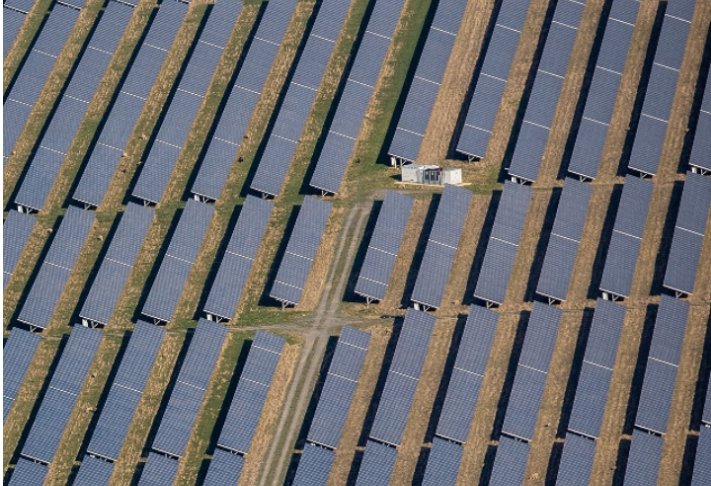In an age when environmental sustainability is at the forefront of global consciousness, the rapid expansion of solar farms represents a pivotal shift in how the world harnesses energy. Here, we explore the monumental impact of solar farms, discussing how these mega-installations are not just a reflection of the renewable energy movement but leaders in reshaping the global energy industry.
The Unstoppable Rise of Solar Farms
Solar farms are sprawling fields that dot the landscape, generating electricity from the sun’s inexhaustible rays. With the continuous advancements in photovoltaic technology, the efficiency and cost-effectiveness of these farms have skyrocketed, making them a dominant force in the renewable energy market.
Driven by government incentives, falling costs for solar and battery systems and the increasing demand for clean power, the global solar farm footprint continues to expand at an astonishing rate.
The Environmental Motivation
The primary motivation behind the solar farm revolution has been the imperative to reduce carbon emissions and combat climate change. Solar energy is clean, abundant, and renewable, offering a pathway to a greener future. By harnessing the sun’s power, solar farms reduce our reliance on fossil fuels, which are the main culprits of air pollution and global warming.
The Economic Incentive
Beyond their environmental benefit, solar farms are becoming increasingly attractive from an economic perspective. The plummeting costs of solar panels and batteries, combined with the scalability of solar installations, have significantly narrowed the gap between traditional and renewable energy prices. Solar energy, once derided for its high initial investment, is now proving to be a sound financial choice, with lower long-term operational costs and a near-zero cost of fuel.
Powering up the Industry with Solar and Battery Systems
Solar and battery systems have gone hand in hand in enabling solar farms to become more resilient and reliable sources of energy. The integration of energy storage provides a solution to the intermittent nature of solar power, ensuring a steady supply of electricity even when the sun isn’t shining. This synergy has unlocked greater flexibility and continuity in energy distribution, allowing solar farms to contribute to grid stability on a large scale.
The Compensation for Variability
Variability in solar power production due to weather patterns is a well-known challenge. Battery systems, however, have emerged as the perfect complement to solar energy, offering a means to store the excess power when the sun is abundant and release it when needed. This compensation at times of low or no solar generation has been pivotal in the broader acceptance and incorporation of solar farms into energy grids worldwide.
The Tech At the Heart
Cutting-edge battery technologies like lithium-ion and redox flow batteries are at the heart of these solar systems, with ongoing developments promising even better performance and longer lifespans. The improved efficiency of these storage options further cements the role of solar farms in the energy transition, as they can now deliver power consistently, day or night.
The Dawn of the Mega-Solar Farms
Mega-solar farms, those ranging from hundreds to thousands of acres, have become synonymous with the large-scale implementation of solar energy. They symbolize the unprecedented growth of the solar industry and its capacity to generate electricity at utility-level proportions.
Global Leaders in Generation
The largest solar farms can be found in regions with the most favourable conditions for solar power, such as the deserts of the Middle East, the western United States, and Australia. These colossi of the renewable energy world produce gigawatts of power, enough to sustain the electricity needs of entire cities. With a keen eye on sustainability and energy independence, they forge a new model for energy ecosystems around the globe.
The Integration Challenge
The integration of these mega-farms into existing energy infrastructures has its complexities. Upgrading grids, revising regulations, and ensuring energy market stability provide significant challenges. Yet, progress continues as these behemoths push the boundaries of what’s possible with solar energy and inspire further innovation and investment.
The Role of Policy and Innovation in Solar and Battery Price
Policy support has been instrumental in the meteoric growth of solar farms. Government tax credits, grants, and feed-in tariffs have accelerated their deployment and have been crucial in driving down solar and battery prices. These incentives have catalyzed innovations in technology and business models, making solar energy a dynamic and rapidly evolving field.
A Price to Power Ratio
The correlation between solar and battery price and the power they produce is pivotal. With declining costs and increasing efficiency, the price-performance ratio of solar farms has become a key metric in gauging their viability. The continuous innovation in manufacturing and materials, combined with supportive policies, has resulted in a highly favourable ratio, making solar farms increasingly cost-competitive.
Investment Drivers
Investment in solar farms is not just a matter of environmental commitment; it’s a strategic financial decision. From venture capitalists to large energy corporations, the allure of stable, long-term returns is drawing significant capital into solar energy. The role of financial markets in the growth of solar farms cannot be overstated, with investments in research and development, production facilities, and the farms themselves powering the sustainability revolution.
The Ever-Bright Future of Solar Farms
The future of solar farms is the most radiant aspect of this renewable revolution. Forecasts predict an exponential increase in the number and size of solar installations in the coming years. With the dual approach of lowering costs and improving performance, solar farms are poised to become the backbone of the world’s energy infrastructure.
New Frontiers
The quest for solar power has extended beyond the Earth, with plans for space-based solar arrays that capture the sun’s energy in orbit and beam it back to the planet. Closer to home, the integration of solar power in smart cities and IoT applications promises an interconnected energy ecosystem that is as intelligent as it is green.
A Community of Solar Advocates
The solar revolution is not just a story of technology and investment; it’s also about people. A growing community of solar advocates, technicians, and enthusiasts is propelling the shift towards a brighter, cleaner future. Their efforts to educate, innovate, and advocate for solar energy are as critical as the technology itself, reinforcing the move towards a more sustainable world.
Conclusion
The rise of solar farms represents a historic transformation in the energy sector, one that offers a compelling vision of a future powered by clean, abundant, and renewable energy. With unprecedented growth, declining costs, and relentless innovation, solar farms are proving to be more than just a passing trend; they are the foundation of a more sustainable energy paradigm. As the solar industry continues to mature, its impact will be felt not only in the reduction of greenhouse gases but also in the reshaping of economies, landscapes, and our collective vision for a better tomorrow.






